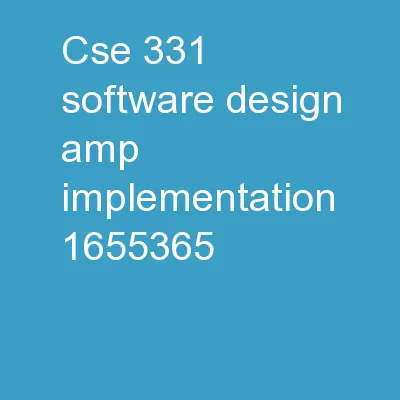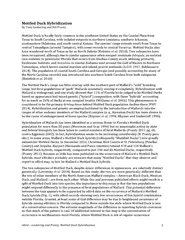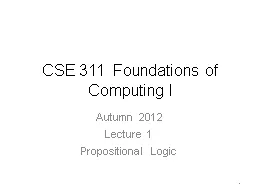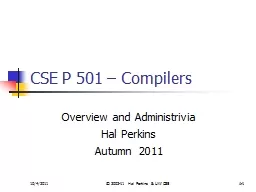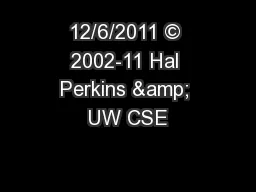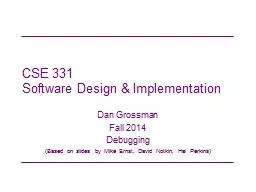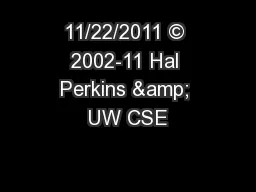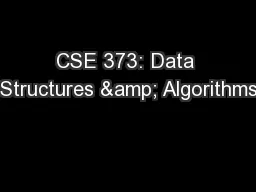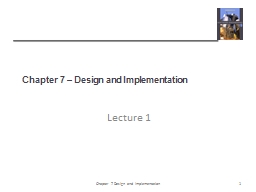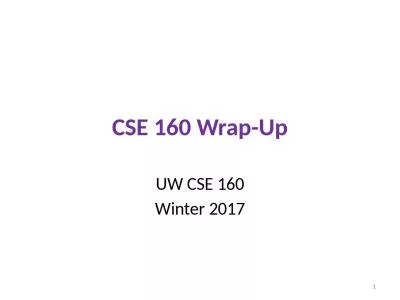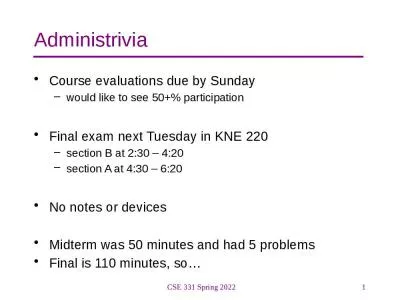PPT-CSE 331 Software Design & Implementation
Author : yoshiko-marsland | Published Date : 2019-02-03
Dan Grossman Spring 2015 Testing Based on slides by Mike Ernst Dan Grossman David Notkin Hal Perkins Outline Why correct software matters Motivates testing
Presentation Embed Code
Download Presentation
Download Presentation The PPT/PDF document "CSE 331 Software Design & Implementa..." is the property of its rightful owner. Permission is granted to download and print the materials on this website for personal, non-commercial use only, and to display it on your personal computer provided you do not modify the materials and that you retain all copyright notices contained in the materials. By downloading content from our website, you accept the terms of this agreement.
CSE 331 Software Design & Implementation: Transcript
Download Rules Of Document
"CSE 331 Software Design & Implementation"The content belongs to its owner. You may download and print it for personal use, without modification, and keep all copyright notices. By downloading, you agree to these terms.
Related Documents

